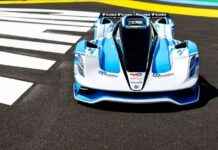On the streets of San Francisco, two companies using driverless taxis are fighting over customers. Now the city has enough of it.
A taxi drives to the side of the road, called with the associated app. But instead of being greeted by the driver, the passengers only look at an empty front seat. What sounds like science fiction in this country has been reality in San Francisco for several years: two companies, Waymo and Cruise, competed to drive the mobile devices autonomously through the city. But San Francisco has had enough of the problems this creates.
This comes from a letter from the city administration. Public transit officials are reaching out to the California legislature. And challenge them to stop the constant expansion of robotic taxis in the city.
Taxis without a driver
They have slowly but surely spread throughout the city. The company Cruise, which belongs to General Motors, started with 30 cars. At the beginning, they were only allowed to drive autonomously for a limited time: no driver had to accompany the car between 10 p.m. and 6 a.m. So when the streets are the least busy. In the meantime, however, permission has been granted to extend these times. All that’s missing is the final okay from the California Transportation Authority.
However, the city administration wants to slow this down. “We prefer a slow rollout with incremental expansions rather than an indefinite permit,” three city officials wrote in the aforementioned letter about the cruise application last week. A second letter referred to competitor Waymo with the same claim.
Not without problems
The fact that the city prefers to take it easy is due to the existing problems with self-driving taxis. In the summer, for example, almost 20 cruise taxis operating at night simply stopped and brought traffic to a standstill in parts of the city. A problem with the tax server was to blame, you can find out more about the bizarre incident here.
Since then there have always been problems. A group of cruise taxis made a road so impassable in September that a bus carrying 45 passengers became stranded. On another occasion, one of the taxis tried to evade a police check – by simply driving away from the police officers. Only to stop again 50 meters further. Videos of the incidents show the reactions of passers-by to the taxis. They are mostly negative and malicious.
Waymo, which belongs to Google’s parent company Alphabet, has had fewer problems so far. This is mainly due to the fact that his taxis drive autonomously through the city, but for safety reasons there is always a human driver behind the wheel so that he can intervene. In this way, the failures that occur can be resolved without much fuss.
Better not to rush anything
Probably also in order to increase the acceptance of the population, the city authorities prefer not to rush things. The taxis should still not be allowed to drive alone in the city center, and the rush hour at the start and end of the working day should continue to be denied by human drivers. In addition, the city is demanding more access to the operators’ internal data in order to be able to better assess the error rate of the self-driving cars.
This is definitely a political decision. San Francisco has set a goal of zero road deaths by next year. We are still a long way from that – and are even moving in the wrong direction. When the target was set in 2014, there had been 31 deaths from traffic accidents that year. In 2022 there were 37.
human risk factor
Even though the two taxi companies Cruise and Waymo have not caused any fatal accidents so far, they are certainly perceived as a source of danger. Although in theory the software of the self-driving cars should drive safer and more reliably than a human driver, in practice it often does not. This is mainly due to the human factor, which is difficult for artificial intelligence to read.
Because the AI behind the wheel is usually trained with very clear rules, it is less able to deal with the often more chaotic human road users, argues the letter. It also plays a role that people are simply irritated by the lack of a driver. “They can bring other vehicles to dangerous, abrupt lane changes, suddenly brake or accelerate, or get into the bike lane,” the officials explain their concern.
This makes the situation somewhat paradoxical: in order to really be able to practice driving, the cars should be allowed to drive in traffic. However, as long as the majority of road users are human, the risk of accidents is greater. At the same time, it is becoming increasingly unlikely that there will be full automation – because as the number of robot cars increases, so does the risk of accidents caused by them. And so their reputation suffers. The slow approach of San Francisco seems a very reasonable approach,
For US Secretary of Transportation Pete Buttigieg, despite the risks, there is no way around self-driving cars in the long term. He confirmed this to “Quartz” in the fall. “I find it hard to imagine how they can drive worse than humans,” he said, referring to future safe-driving autonomous cars. “Human drivers aren’t just a problem. They’re killer.”
Sources: San Francisco Transportation Department letter, SF Gate, Quartz, NBC









